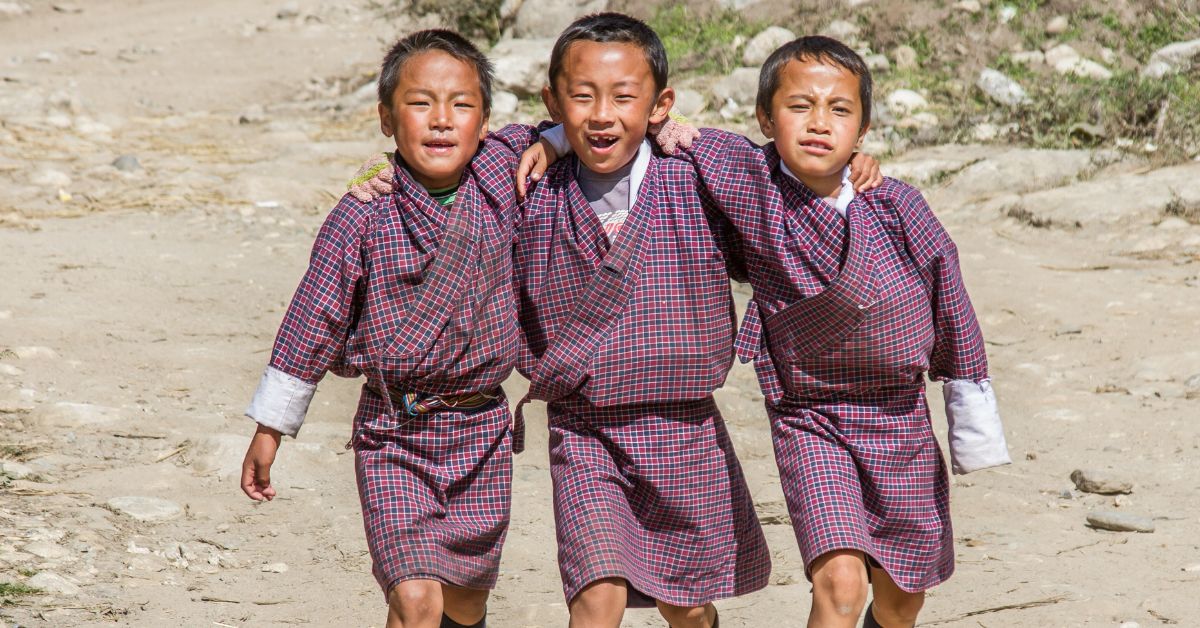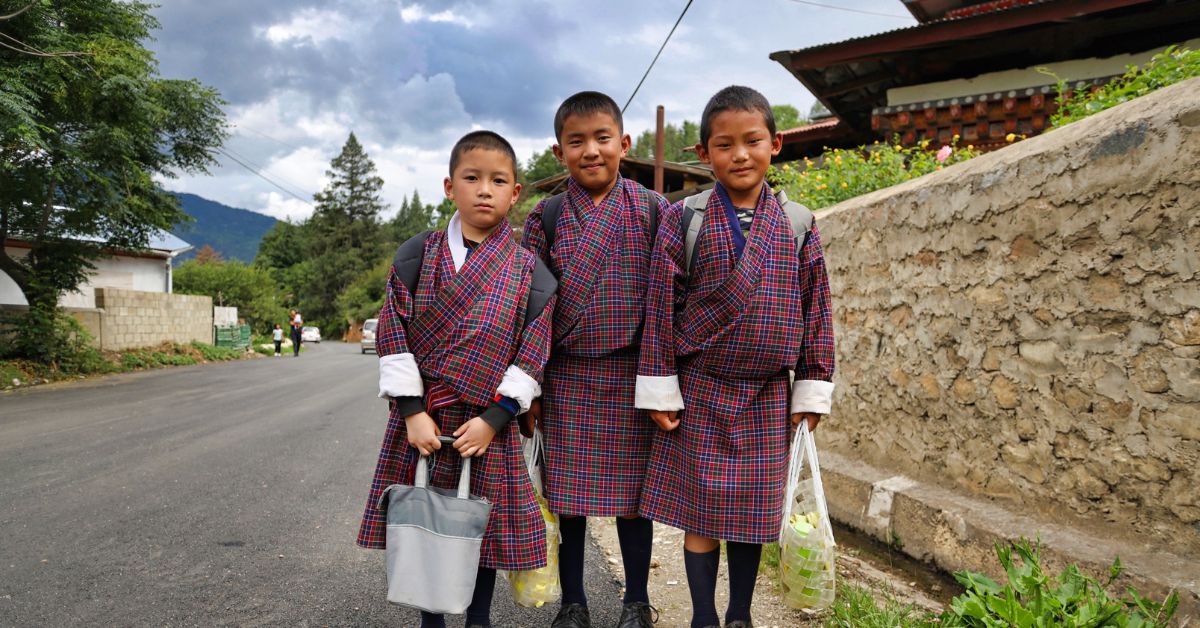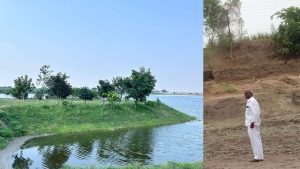‘We Walked Village to Village’: How Kerala Teachers Helped Transform Education in Bhutan
Most of us may not know that the Indian state of Kerala has played an essential role in shaping Bhutan’s modern education system to be the way we know it today. Here’s how the construction of this new reform took place.

The ‘land of the thunder dragon’, known to us by the name ‘Bhutan’, had remained closed to the outside world for centuries. Since the 60’s and 70s, however, it embraced westernisation, albeit in its own unique way. For instance, its Gross National Happiness philosophy is a carefully constructed framework that guides the nation’s government, regularly monitoring the citizen’s overall wellbeing and sustainable development.
The Friedrich Naumann Foundation shared that the general literacy rate here is 71.4%, and modern education, which was fully embraced only after the 50s (up until then, the region mostly relied on monastic education), has been the “great equaliser, responsible for lifting less advantaged sections of society out of poverty and improving their chances for success in adulthood”.
Most of us may not know that the Indian state of Kerala has played an essential role in shaping this modern education system to be the way we know it today. In fact, V Shantakumar and Phuntsho Choden wrote for this 2018 paper for Azim Premji University and said, “Almost everyone above the age of 25-30 years (in Bhutan) has been taught by one or the other teacher from Kerala.”

Bhutan before 1960
Until the ‘60s, students in Bhutan had mostly Buddhist monasteries to take private education. While diplomats and children of royal families were sent to India and Europe for education, the rest of the population mostly relied on religious learning.
“By the early ‘50s, the ruling dynasty realised the need to modernise the country’s education, even if they wanted to continue to keep Bhutan isolated from the rest of the world,” wrote author Ajay Kamalakaran for onmanorma. “The first step was to set up Hindi medium schools in the country, and almost totally adopt the Indian system from neighbouring West Bengal.”
William Mackey, a jesuit priest who is credited with establishing the modern education system of Bhutan, recalled in the book The Call: Stories of Yesteryears, “The second King, Jigme Dorji, set up 7 to 10 Hindi Medium schools, in Bumthang, Ha, Wangdi, Tashigang, Damphu and Paro. This was the beginning of our present Bhutanese Education System.”
Mackey also noted that the third king, Ugyen Dorji Wangchuk, wanted to establish English Medium Schools, for which the government approached the Jesuits of St Joseph’s College, North Point, Darjeeling, in 1962. Kamalakaran opines that the proximity of the two regions — both in culture as well as geography — made this convenient.

Meanwhile, Mackey credited Lyonpo Dawa Tsering, the then secretary of the Development Ministry, for slowly replacing Hindi textbooks with English ones. “His late Majesty and the late Prime Minister asked me to set up an English Medium Education System, based on the West Bengal Board of Secondary Education. Mr Rustomji, the then Political Officer in Bhutan, promised that he would get our High Schools affiliated to the West Bengal Board of Secondary Education,” he noted.
The construction of modern education
In 1962, Tsering, impressed with the quality of the primary education system of Kerala, went on a recruiting trip far south. He recruited 20 teachers and returned to south-eastern Bhutan. These 20 educators would later become the pioneers of the country’s modern education system.
“They arrived in Samdrup Jongkhar, where they were given rations and a little money. They started walking (no roads then in the East), from village to village.” Mackey wrote. “[Tsering] left two teachers in each of the schools. He told them he would pick them up some 10 months later. Some of these, like Mr and Mrs R Krishnan, recently retired.”
The teachers would walk miles in low temperatures to meet in towns like Lhuentse, which is 452 km away from the capital Thimphu. “These were very devoted, sincere teachers, who sacrificed their whole life for Bhutan Education. Their contribution to our present education system in the early years was enormous. Without their devoted and sincere teaching in isolated difficult rural areas, Bhutan could never have reached its present high standard of education in the interior schools,” Mackey added.
The teachers helped build schools from the ground up with the help of students and locals. The makeshift classrooms with bamboo and straw roofs became a sanctuary for eager learners. The students also helped the teachers prepare meals for them. Kamalakaran wrote, “Children were sent to collect firewood for the simple porridge and vegetables. When the latter was not in supply, children and teachers would collect wild ferns.”
Jigme Zangpo, one of the first students of the teachers from Kerala, recalled in the publication that after their arrival, the education system began including physical training, drama and cultural activities in its curriculum as well.
In 2014, Bhutan’s current King Jigme Khesar Namgyel Wangchuk, noted “India has always played a vital role in education in Bhutan. Bhutanese youth routinely study in Indian institutions and, in turn, impart their knowledge in Bhutan too.”

Until the ‘60s, students in Bhutan had mostly Buddhist monasteries to take private education.
The ‘manna’
The Call mentions the names of a few among the 20 teachers who went to Bhutan, including P B Nair, M Prasad, G B Kurup, M K G Kaimal and R Sivadasan, Mr and Mrs R Krishnan.
Prasad, who lived for 11 years in the country, recounted, “Being in the inspectorate for 11 years gave me the experience of knowing the people, culture, tradition, and their mode of living in the urban, rural and remote areas in an elaborate manner.”
It also narrates Kurup’s moving account of living in the country for 26 years.
Kurup recalled that in 1962, after walking for 10 days, he reached his school in Trongsa in the dead of the night. Suffering from a bad knee and taken aback by the isolation of the tiny village, he wondered if he had made the right choice by leaving his high income job to teach in this remote region.
Some time later, he was awoken by the knocking of two children — a boy and a girl — at his door. They handed him a kettle with water, red rice, and ema datshi (national dish of Bhutan). “I accepted the ‘manna’ with gratitude. I tried to thank them. They continued their giggles. They said something. I did not understand the language, but I understood the meaning. ‘Sir, as long as we are here, you have nothing to worry about’. Language cannot create a barrier between love and affection.”
Kurup noted, “I had to fight back my tears of happiness. I changed my mind. I will work for these children. I will give whatever I have to make them better persons (sic).” If you found our stories insightful, informative, or even just enjoyable, we invite you to consider making a voluntary payment to support the work we do at The Better India. Your contribution helps us continue producing quality content that educates, inspires, and drives positive change. Choose one of the payment options below for your contribution- By paying for the stories you value, you directly contribute to sustaining our efforts focused on making a difference in the world. Together, let’s ensure that impactful stories continue to be told and shared, enriching lives and communities alike. Thank you for your support. Here are some frequently asked questions you might find helpful to know why you are contributing?

Edited by Divya Sethu
Sources:
The Call: Stories of Yesteryears; Centre for Educational Research and Development, Department of Education, Rinpung, NIE, Paro
Overview and Transformation of Education in Bhutan: Written by Karma Choden for Freidrich Noumann Foundation; Published on 12 December 2022
How Malayali Teachers Helped Build Bhutan’s Education System: Written by Ajay Kamalakaran; Published on 12 July 2021
Bhutan: Education in India: Written by Mihir Bhonsale for Observer Research Foundation
‘India’s role in Bhutanese education is vital’: Written by Priyanka Kachchava for The Times of India; Published on 5 October 2014
This story made me
-
97
-
121
-
89
-
167













